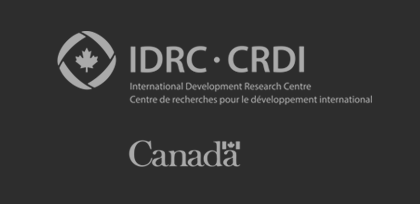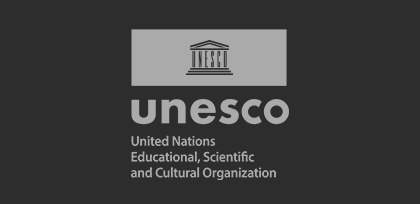OWSD Nigeria National chapter presents Ubiquitous PFAS in the Environment and Climate Change
February 08, 2024
OWSD Nigeria National Chapter University of PortHarcourt Branch Series of Scientific Communications: Ihesinachi A. Kalagbor on Ubiquitous PFAS in the Environment and Climate Change
Ubiquitous PFAS in the Environment and Climate Change
Ihesinachi A. Kalagbor (PhD)
Department of Chemistry, Faculty of Science Rivers State University Nkpolu-Oroworukwo P.M.B. 5080 Port Harcourt. Rivers State.
Email: Ihesinachi.kalagbor@ust.edu.ng ORCID 0000-0001-7696-3346
Abstract
Perfluoroalkyl and polyfluoroalkyl substances (PFASs) are a group of compounds that are extensively used in consumer and industrial products. The widespread application of these products has made them ubiquitous. The environmental persistence, bioaccumulation and toxicity of these emerging contaminants has constituted various problems in the environment. They have a wide range of applications in the aerospace, photographic imaging, electronic and aviation industries. The major sources of PFAS in the environment is the primary manufacturing facilities where PFAS – containing products are synthesized. PFAS compounds are of both short chain carboxylic acids and long chain compounds and they are all being detected in the environment. Marine PFAS can produce harmful effects on gas exchange and the ocean’s carbon cycle. This has led to exchange in greenhouse gas (GHG) emissions which eventually affects global warming and climate change.
Keywords: Persistent contaminant, greenhouse gases, Biota, Marine PFAS, Bio-accumulative, Ocean’s Carbon cycle.
Introduction
Per- and polyfluoroalkyl Substances (PFAS) are persistent contaminants. Perfluoroalkyl substances and polyfluoroalkyl substances (PFAS) are a class of man-made chemicals in which the hydrogen substituents of at least one terminal carbon atom are completely replaced by fluorine atoms (Geuke, 2016). The strong C-F bond of PFAS makes them extremely resistant to hydrolysis, thermal, microbiological, and photolytic degradation (Wang et al., 2009). Due to their strong C -F bond, many PFAS can be very persistent in the environment with degradation periods of years or decades under natural conditions. This is the reason they are sometimes called the “forever chemicals”. PFAS has found enormous use in the chemical industries which include the textile industry, paper products, cookware, firefighting foams, and as industrial surfactants (Buck et al, 2011, Robel et al, 2017). They have a wide range of applications in the aerospace, photographic imaging, electronic, and aviation industries. Both short-chain carboxylic acids such as (PFAA, PFH, PFHxA, PFBA, etc) and long-chain (PFSAs and PFCAs) are being detected in the environment (Gebbnik et al, 2016). The PFSAs (Cn H2n+1 SO3H, n ≥ 6) and the PFCAs (Cn F2n+1COOH; n ≥ 7) have been reported to be more bio-accumulative than the short chain. The most-studied PFAS chemicals are PFOA and PFOS and it is indicated that these chemicals are capable of causing reproductive problems, developmental defects, liver and kidney diseases, and immunological effects in laboratory animals. (ATSDR, 2021). The major sources of PFAS in the environment are the primary manufacturing facilities where PFAS–containing products are synthesized or where they are used as processing aids (Bulk et al, 2011). The secondary manufacturing facilities make use of the materials produced at the primary manufacturing facilities as part of their industrial finished products or for workers' safety purposes. PFOS-based materials have been used to suppress harmful mists during electroplating activities (Gluge et al 2020). Stack emission may result in aerial deposition of PFAS to soil and surface water related to the industrial facilities. Military bases, airports, and industrial sites discharge effluents that contain aqueous film-forming foams (AFFF) from fire-extinguishing waters. PFAA is used as a polymerization aid and may occur as impurities or residuals in some products (Prevedouros et al 2006). In fast food wrappers, the most common PFAS detected is the PFCA and PFSA (Schaider et al 2017). Studies have shown that waste streams from semiconductor industries contain a good number of PFAS (Liu et al, 2009). Fire-fighting foams used for extinguishing flammable liquid hydrocarbon are a major source of PFAS release to the environment. These find their way into surface water and groundwater. Destruction and Disposal of municipal solid waste (MSW), and waste from metal salvage facilities and scrap yards are also potential sources for the release of PFAS. Landfills are repositories for PFAS-contaminated industrial waste sewage sludge and waste from treatment plants. Leachate from some MSW landfills is a source of PFASs release to the environment (Robey et al, 2020). The levels of some of these harmful PFAS in the atmosphere are not declining despite their being phased out by some major manufacturers (Cockbum, 2022).
1. PFAS pollutant in the Marine
Discharge of municipal and industrial waste waters are considered to be the sources of PFAS in the marine environment. Other point sources besides shipping and water transportation are the sewage treatment plant and waste water disposal. Waste water effluent is considered a major PFAS source (Cervery et al, 2018, Dauchy et al, 2017). Effluent load in the lagoons and the open sea has adverse effects as reported by Aasim et al, (2021). PFOA is the most ubiquitous compound that is found in the Mediterranean Sea water followed by PFOS and these are reported. Between the years 2000 and 2020, studies were carried out and published on PFAS occurrence in the ocean, sea water, sediments, and biota. Oceans and deep seas act as a sink for the carbon in the environment because of their remarkable capacity to absorb atmospheric carbon in the form of CO2 from emissions. Marine PFAS can produce harmful effects on gas exchange and the ocean’s carbon cycle. This leads to an exchange in greenhouse gas (GHG) emissions which eventually affects global warming and climate change.
PFAS diminishes the ability of the ocean sequestration of global carbon thereby causing the atmospheric carbon to increase dramatically. Carbon compounds are known to regulate the planet’s temperature, make the food that sustains us via photosynthesis, and provide energy. The oceans are the most extensive natural resources of CO2 which have an essential role in the sequestration of atmospheric carbon and regulating climate change (Ali, 2023). The carbon cycle is the flow of carbon between reservoirs in an exchange. According to Zhu et al (2019), an increase in the levels of atmospheric carbon contributes to global warming.
2. Rainfall as a vehicle for PFAS
PFAS in rainfall is one of the vectors for climate change. Rainfall becomes the vehicle by returning the chemicals to the surface through ocean acidification, biogeochemical flows, and biosphere integrity. Rainfall virtually everywhere on Earth contains levels of per- and poly-fluoroalkyl substances (PFAS) that exceed safety limits set by the U.S. Environmental Protection Agency (EPA) and other environmental regulators. Some scientists confirm that atmospheric deposition via precipitation is one of many routes by which PFAS contamination spreads throughout long distances in air, soil, and surface water. The most common PFAS found in rainfall are perfluorooctanesulfonic acid (PFOS), perfluorooctanoic acid (PFOA), perfluorohexanesulfonic acid (PFHxS), and perfluorononanoic acid (PFNA). The levels of PFOA detected in rainfall by findings compiled by Jacques and other scientists in 2022 showed that it far exceeded EPA’s advisory limits. PFAS when discharged from industrial facilities eventually reach waterways and oceans, where instead of dissolving, they enter the atmosphere via sea-spray aerosols. Rainfall, in turn, returns these chemicals to the surface, perpetuating their environmental threats even decades after their initial release (Jacques, 2022). Because of the ubiquity of PFAS contamination in rainfall, soil, and surface water and the inability to reverse this contamination on a global scale with existing technology, some researchers have opined that PFAS should be regarded as a tenth planetary boundary. PFAS releases are increasing as a result of climate change, and the release of greenhouse gases, which in turn affects climate change. In the developed world people do not drink rain water. However, this is not so in some developing countries where there are inadequate sources of clean, hygienic drinking water. Strategies are being propounded for reductions in the release of these emerging contaminants (Gander, 2022).
PFAS in aerospace, automobiles, and industries
PFAS have the properties that qualify them to meet harsh and extreme conditions of use in airplane engines, gas extraction machinery, and electrical equipment. Some PFAS are also crucial in application for climate neutrality. They are not only in spacecraft but also part of the production process needed to create them. The most beneficial are the fluoropolymers. In the industry, they are sometimes also called fluorochemicals and are critical to multiple industries including cars, airplanes, computers, and smart phones. PFAS are used in everyday applications to promote durability, water resistance, and many other qualities. They are found in many important parts of modern life, including automobile fuel lines, seals, and batteries. In aerospace, they help allow interference-free communication from the cockpit to the wings, tail, and other equipment. Electronics, such as semiconductors and batteries, which are vital for everything from smartphones and wearable fitness trackers to national security technologies are also products of the fluorochemicals (PFAS). Other uses are medical technologies and devices, like catheters, stents, and needles, as well as transdermal patches that are used for medicine delivery. Sustainable and renewable energy, including solar panels, windmills, and fuel cells are applications of PFAS. However, the release of these PFAS from the manufacturing processes and the technological equipment into the environment are part of the contributory factors to the increase of global warming.
Removal of PFAS from the environment
There are removal processes that have been used for removing PFAS. Some of them are adhesion, dilution, diffusion, degradation, and sedimentation. Adhesion to and adsorption on suspended particles in sedimentation has shown to be a potential removal process. Sedimentation acts as a sink for PFOS and longer-chain PFAS
Conclusion
PFAS pollutants in the environment are capable of producing harmful effects on gas exchange leading to an increase in greenhouse gas (GHG) emissions which eventually affect global warming and climate change. The industrial company, 3M has published a release on their plans to discontinue manufacturing all fluoropolymers, fluorinated fluids, and PFAS-based additive products by the end of 2025. This step will help reduce the amount of PFAS in the environment from this company. PFAS is being considered as a tenth planetary boundary and this calls for drastic measures to address its presence globally.
REFERENCES
Aasim M. Ali, Christopher p. Higgins, Walied M. Alarif, Sultan S. Al-Lihaibi, Mohammed Ghandourah, and Roland Kallenborn (2021) PFAS in contaminated coastal marine waters of the Saudi Arabian Red Sea: Environmental Sc and Pollution Research vol. 28; p 2791-2803.
Agency for Toxic Substances and Disease Registry (ATSDR). 2021. Toxicological profile for Perfluoroalkyls. Atlanta, GA: U.S. Department of Health and Human Services, Public Health Service. DOI: 10.15620/cdc:59198
Ali Mahmoudnia (2023) The Role of PFAS in unsettling ocean Carbon Sequestration – Environmental Monitoring and Assessment. 195:310
Buck, R., Franklin, J., Berger, U., Conder, M. J., Cousins, I. T., de Voogt, P., Jensen, A. A., Kannan, K., Mabury, A. S. and Van Leeuwen, P. J. (2011) Perfluoroalkyl and Polyfluoroalkyl substances in the environment: terminology, classification and origins. Integrated Environmental Assessment and Management. 7(4), 513-541. DOI: 10.1002/ieam.258.
Carvery D, Grabic R, Fedorova G, Grabicova K, Turek J, Zlabek V, Randak T (2018). Fate of perfluoroalkyly substances within a small stream food web affected by sewage effluent. Water Research 134=226-233.
Cockbum H., 2022 Rainwater everywhere on Earth contains Cancer causing ‘Forever Chemicals’, Study finds. Environmental Science & Technology Journal
Dauchy X, Boiteux V, Bach C, Colin A, Hemad J, Rosin C, Munoz JF (2017). Mass flows and fate per-and polyfluoroalkyl substances (PFASs) in the waste water treatment plant of a fluorochemical manufacturing facility. Sci. Total Environ. 576, 549-558.
Gander M. J., 2022 Climate change and the water quality threats posed by the emerging contaminants per- and polyfluoroalkyl substances (PFAS) and microplastics. Water International Journal https://doi.org/10.1080/02508060.2022.2120255
Gebbink WA, Ullah S, Sandblom O, BergerU (2013) Polyfluoroalkyl Phosphate Esters and Perfluoroalkyl Carboxylic Acids in Target Food samples and Packaging Method Development and Screening. Environ. Sci. Pollut. Res. 20(11):7949-7958.
Gueke, B. (2016) Dossier-Per- and polyfluoroalkyl substances (PFASs). Food Packaging Forum. DOI:10.5281/zenodo.57198
Jacques J., 2022 “Scientists Contend PFAS in Rainfall Represents Global Crisis” in “Outside the Safe Operating Space of a New Planetary Boundary for Per- and Polyfluoroalkyl Substances (PFAS),” Journal of Environmental Science & Technology.
Liu J, Mejia Avendano S (2013) Microbial degradation of polyfluoroalkyl chemicals in the environment: A review. Environ Int. 61:98-114. doi:10.1016/J. Environ. 2013.08.022.
Prevedouros K, Cousins IT, Buck RC, Korzeniowski SH (2006) Sources, fate and transport of perfluorocarboxylates. Environ Sci Technol 40:32–44. doi:10.1021/es0512475
Schaider, L. A., Balan, S. A., Blum, A., Andrews, D. Q., Strynar, M. J., Dickinson, M. E., Lunderberg, D. M., Lang, J. R. and Peaslee, G. F. (2017) Fluorinated Compounds in U.S. Fast Food Packaging. Environmental Science and Technology Letter. 4(3), 105-111. doi:10.1021/acs.estlett.6b00435
Wang Z, Scheringer M, MacLeod M, Bogdal C, Muller CE, Gerecke AC, Hungerbuhler K (2012) Atmospheric fate of poly- and perfluorinated alkyl substances (PFASs): II. Emission source strength in summer in Zurich, Switzerland. Environ Pollut 169:204–209. doi:10.1016/j.envpol.2012.03.037
Zhu E, Deng J, Zhou M, Gan M, Joang R, Wang K, and Shahtahmassebi A (2019). Carbon Emissions induced by land-use and land-cover change from 1970 to 2010 in Zhejiang, China. Science of the Total Environment, 646, 930-939.











































